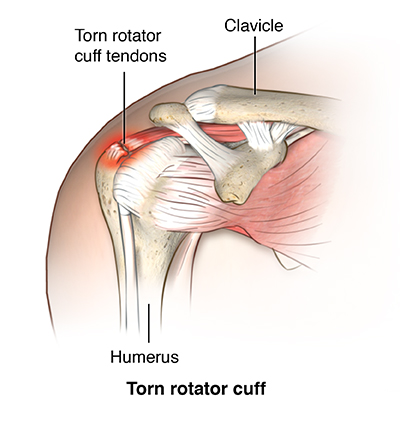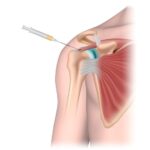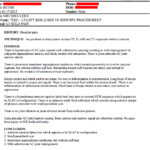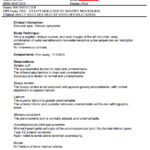Rotator Cuff Tears

A rotator cuff tear occurs when any tendon of the rotator cuff rips, either partially or completely. Rotator cuff tears are among the most common types of shoulder injuries.
Rotator cuff tears are most common in people who repeatedly perform overhead motions. These tend to be people with active jobs—such as construction workers—or athletes, though anybody can end up with a rotator cuff tear whether they’re active or not.
Rotator cuff tears vary in severity from partial- to full-thickness tears, with partial tears being far more common. It’s possible for a patient to have a partial-thickness rotator cuff tear without even realizing it.
Symptoms of Rotator Cuff Tears
- Pain that radiates from the upper shoulder down the elbow
- Difficulty moving the afflicted shoulder
- Pain that becomes worse after laying on the afflicted shoulder
- A dully, achy sensation in the shoulder and upper arm
- Weakness when moving the shoulder
- Pain when raising the arm overhead
Common Causes of Rotator Cuff Tears
- Acute trauma
- Repeated stress
- Normal wear and tear (the rotator cuff naturally becomes more brittle with age)
If your shoulder pain is caused by a work-related injury, Eastside Medical Group is an Ohio Bureau of Workers’ Compensation certified provider.
Non-Surgical Treatment Options for Shoulders at Eastside Medical Group
Joint Injections
When joint pain does not resolve in a reasonable amount of time with OTC medication and/or physical therapy, an injection of medication directly into the joint is a frequently performed procedure.
What is in a joint injection?
 A joint injection typically contains a local anesthetic and a corticosteroid; other shoulder joint injections can include biologics. The local anesthetic, similar to what you might receive at the dentist, provides early pain relief, while the steroid suppresses inflammation and decreases swelling for long-term pain relief.
A joint injection typically contains a local anesthetic and a corticosteroid; other shoulder joint injections can include biologics. The local anesthetic, similar to what you might receive at the dentist, provides early pain relief, while the steroid suppresses inflammation and decreases swelling for long-term pain relief.
In addition to treating joint pain, the injections are used as a diagnostic tool. The local anesthetic has a numbing effect in the joint, and the amount of immediate pain relief experienced will help confirm or rule out the joint as a source of pain.
How are shoulder joint injections administered?
A joint injection is used to treat inflammatory joint conditions such as arthritis, gout, bursitis, tendonitis, and osteoarthritis.
The injection is performed by using ultrasound to guide exactly where the needle needs to go into the affected joint and distributing an anti-inflammatory agent. The most common of these is a corticosteroid (cortisone shots).
What can be expected after a shoulder joint injection?
After the injection, you may experience immediate but temporary pain relief from the local anesthetic.
Because steroids need a few days to deliver noticeable benefits, there is a chance of the pain returning or even worsening. If the pain worsens, it usually subsides within a day or two.
Generally, it’s recommended that you take it easy the day of the procedure, but return to your usual activities the following day. You can ice down the injection site and take an over-the-counter NSAID, like ibuprofen, for pain relief.
Although joint injections do not change the underlying condition, they can break the cycle of pain and inflammation and allow time for exercise or physical therapy to strengthen muscles and get the joints moving again in order to decrease ongoing problems.
Eastside Medical Group also uses hyaluronic acid joint injections for shoulder pain in some instances. Please ask our knowledgeable staff as to what treatment option would be best for your specific case.
Platelet-Rich Plasma Injections/PRFM
Platelet-rich plasma (PRP) has been used since the 1970s in medicine for multiple purposes. The last decade has seen a tremendous focus on PRP applications in musculoskeletal medicine. The potential for PRP to promote tissue healing following injury or disease is attractive to many physicians, researchers, and patients alike.
- Platelet-rich plasma (PRP) injections administer concentrated platelets from the patient’s own blood into damaged cartilage and tendons to reduce pain and to aid in the healing process.
- PRP rebuilds these tissues and can be used for common tendon injuries, such as tennis elbow, and to repair cartilage due to osteoarthritis or other damage.
- PRP injections consist of extracting a blood sample, concentrating the platelets, and injecting them into injured areas of the body.
- PRP injections are sometimes performed in a series, but many patients only require one injection to see results.
Dr. Lauchlin McKeigan, Chiropractic Physician, has seen firsthand the positive healing effects of PRP treatment in his shoulder tear.
We combine all of our shoulder therapy treatment plans with a combination of comprehensive therapeutic exercises, chiropractic care, and medical massage to achieve maximum results with our program!
To learn more about our Comprehensive Shoulder Treatment Options, contact our team at Eastside Medical Group located conveniently in Shaker Square.





